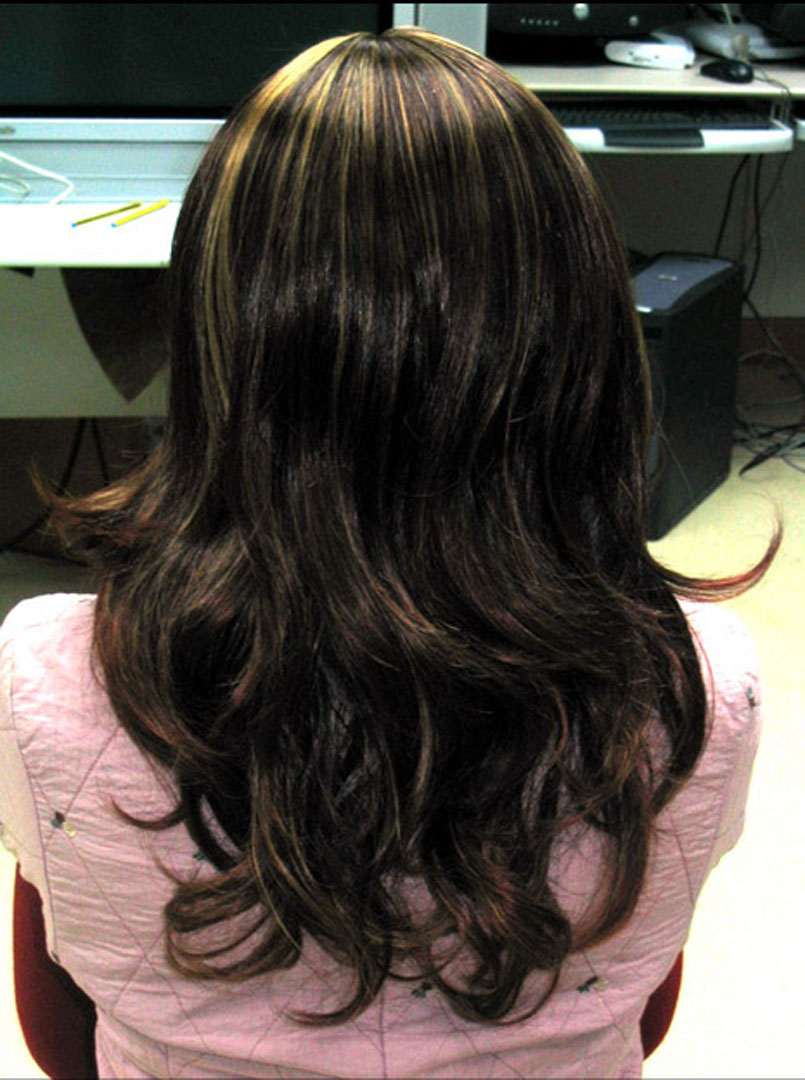“Modeling hair from multiple views” by Wei, Ofek, Quan and Shum
Conference:
Type(s):
Title:
- Modeling hair from multiple views
Presenter(s)/Author(s):
Abstract:
In this paper, we propose a novel image-based approach to model hair geometry from images taken at multiple viewpoints. Unlike previous hair modeling techniques that require intensive user interactions or rely on special capturing setup under controlled illumination conditions, we use a handheld camera to capture hair images under uncontrolled illumination conditions. Our multi-view approach is natural and flexible for capturing. It also provides inherent strong and accurate geometric constraints to recover hair models.In our approach, the hair fibers are synthesized from local image orientations. Each synthesized fiber segment is validated and optimally triangulated from all visible views. The hair volume and the visibility of synthesized fibers can also be reliably estimated from multiple views. Flexibility of acquisition, little user interaction, and high quality results of recovered complex hair models are the key advantages of our method.
References:
1. Bertails, F., Ménier, C., and Cani, M.-P. 2005. A practical self-shadowing algorithm for interactive hair animation. In Proc. Graphics Interface, to appear. Google ScholarDigital Library
2. Chang, J., Jin, J., and Yu, Y. 2002. A practical model for hair mutual interactions. In Proc. of SIGGRAPH conference, ACM, pages 73–80. Google ScholarDigital Library
3. Faugeras, O., and Luong, Q. 2001. The geometry of Multiple Images. The MIT Press, Cambridge. Google ScholarDigital Library
4. Faugeras, O. 1999. Three-Dimensional Computer Vision, a Geometric Viewpoint. The MIT Press, Cambridge. Google ScholarDigital Library
5. Gelder, A. V., and Wilhelms, J. 1997. An interactive fur modeling technique. In Proc. Graphics Interface, pages 181–188. Google ScholarDigital Library
6. Grabli, S., Sillion, F., Marschner, S., and Lengyel, J. E. 2002. Image-based hair capture by inverse lighting. In Proc. Graphics Interface, pages 51–58.Google Scholar
7. Hartley, R., and Zisserman, A. 2000. Multiple View Geometry in Computer Vision. Cambridge University Press. Google ScholarDigital Library
8. Kim, T.-Y., and Neumann, U. 2002. Interactive multi-resolution hair modeling and editing. In Proc. of SIGGRAPH conference, vol. 21, ACM, pages 620–629. Google ScholarDigital Library
9. Kutulakos, K., and Seitz, S. 1999. A theory of shape by space carving. In IEEE ICCV, pages 307–314.Google Scholar
10. Laurentini, A. 1994. The visual hull concept for sihouette based image understanding. IEEE Transactions on Pattern Analysis and Machine Intelligence vol 2, number 16, pages 150–162. Google ScholarDigital Library
11. Lhuillier, M., and Quan, L. 2005. A quasi-dense approach to surface reconstruction from uncalibrated images. IEEE Trans. on Pattern Analysis and Machine Intelligence vol 27, number 3, pages 418–433. Google ScholarDigital Library
12. Marschner, S., Jensen, H., Cammarano, M., Worley, S., and Hanrahan, P. 2003. Light scattering from human hair fibers. ACM Trans. on Graphics vol 3, number 22, pages 780–791. Google ScholarDigital Library
13. Matusik, W., Buehler, C., Raskar, R., Gortler, S. J., and McMillan, L. 2000. Image-based visual hulls. In Proc. of SIGGRAPH conference, ACM, pages 369–374. Google ScholarDigital Library
14. Nakajima, M., Ming, K., and H. Takashi. 1998. Generation of 3d hair model from multiple pictures. IEEE Computer Graphics and Application vol 12, pages 169–183.Google Scholar
15. Paris, S., Briceno, H. M., and Sillion, F. X. 2004. Capture of hair geometry from multiple images. In Proc. of SIGGRAPH conference, ACM, pages 712–719. Google ScholarDigital Library
16. Quan, L., and Kanade, T. 1997. Affine structure from line correspondences with uncalibrated affine cameras. IEEE Transactions on Pattern Analysis and Machine Intelligence vol 19, number 8, pages 834–845. Google ScholarDigital Library
17. Szeliski, R. 1993. Rapid octree construction from image sequences. Computer Vision, Graphics and Image Processing vol 1, pages 23–32. Google ScholarDigital Library
18. Ward, K., and Lin, M. 2003. Adaptive grouping and subdivision for simulating hair dynamics. In Proc. of Pacific Graphics, pages 234–243. Google ScholarDigital Library





